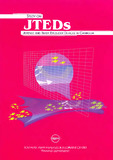Study on Juvenile and Trash Excluder Devices (JTEDs) in Cambodia
นามธรรม
The experiment was conducted during October 2004 in the Sihanoukville, Cambodia using the commercial trawler in order to examine the releasing ability of Juvenile and Trash Excluder Devices (JTEDs) in bottom trawl. This experiment was in the serial study of using the JTEDs under the program of selective fishing gear and practice for responsible fishing. Three types of JTEDs, rectangular shaped window, semi-curve with 1 cm bar spacing and rigid sorting grid JTEDs with 1, 2 and 3 cm bar spacing were used in this experiment has been shown the best results for releasing the non-target catch and could maintain the maximum catch resulted from the previous experiments.
The results indicated that the rigid sorting grid JTED 1 cm bar spacing could give the escapement levels of about 21.93% of the total catch when it was about 56.19% and 75.71% were 2 and 3 bar spacing. The escapement level of semi-curved JTEDs and rectangular shaped rectangular shaped window JTEDs are 37.94% and 61.98%, respectively. However, it was observed that semi-curve JTED performed the highest ability to released trash fish as compared with another two type of JTED used in this experiment. It could be suggested that the effectiveness of the modifications for JTEDs used in the region could be further fine-tuned to improve the performance.
การอ้างอิง
Chokesanguan, B., Ananpongsuk, S., & Pethkam, R. (2007). Study on juvenile and trash excluder devices (JTEDs) in Cambodia. Samut Prakan, Thailand: Training Department, Southeast Asian Fisheries Development Center.

